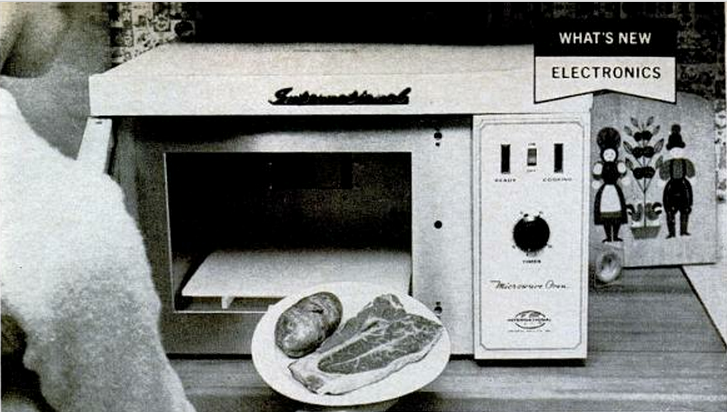April 1968: Popular Science Tests the Brand-New Microwave Oven
"This oven cooks without heat"

This article originally appeared in the April 1968 issue of Popular Science. You can explore more of our archives–stretching back 140 years–here.
A baked potato in six minutes flat…piping-hot biscuits in about 20 seconds…a sirloin steak (rare) in five minutes–these days my wife can cook elaborate dinners, made with fresh food, in less time than it takes to read the directions on a TV dinner. Her secret is our new microwave oven, made by International Crystal Mfg. Co., 10 N Lee St., Oklahoma City.
The “oven” is really a stainless-steel-surrounded cavity (the cooking chamber) hooked up to a miniature radar set. Radar waves (at microwave frequencies) piped into the cavity penetrate the food and heat it internally.
Because there’s no conventional heat source inside, my wife cooks on paper plates (they don’t absorb microwaves, so they stay cool) making clean-up easy. The tablet-top unit costs $575. [Note: In 2012 money, that microwave cost just north of $3,800 (!).]

Mmm, Microwaved Steak
Five minutes after shutting oven door, my wife removes a fully cooked steak and a baked potato–on an uncooked paper plate. A safety interlock turns off microwaves when door is open.

Microwave Guts
The oven’s heart is a magnetron oscillator tube that generates microwaves at a frequency of about 2.5 billion Hertz. The waves are readily absorbed by foodstuffs, and are converted to cooking heat.
From “Personal-Use Report: This Oven Cooks Without Heat, in the April 1968 issue of Popular Science. You can explore more of our archives–stretching back 140 years–here.